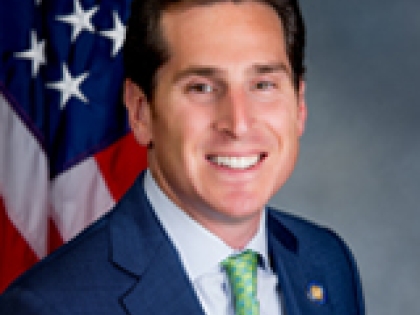
How New York wants to improve the quality of your drinking water
ALBANY – New York is moving forward with a strict limit on certain contaminants in drinking water following a string of incidents that have left some communities in the state without a viable source of drinking water in recent years.
The state’s Department of Health agreed this week to adopt lower thresholds for three drinking water containments – PFOA, PFOS and 1,4-dioxane — after an advisory panel recommended adopting the change late last year.
There will be a 60-day public comment period beginning July 24 before the new standards are officially adopted.
Under the recommended standards both PFOA and PFOS — cancer-linked chemicals used to make non-stick pans and firefighting suppressing foam, respectively — will be limited to just 10 parts per trillion in New York. Current standards set by the federal Environmental Protection Agency limit levels to 70 parts per trillion.
Both PFOA and PFOS have been linked to water contamination incidents in Newburgh, Long Island and Hoosick Falls, a rural town just outside of Albany that is now home to a federal superfund site.
"We're proposing the most protective levels in the nation for three emerging contaminants to ensure we are regularly testing and fixing water systems before they ever rise to a public health risk in any part of the state," Gov. Andrew Cuomo said in a statement.
The Department of Health also adopted the first of its kind standard for 1,4-dioxane – an industrial chemical linked to cancer – to 1 part per billion.
In announcing the new limits, the state also highlighted $350 million in funding available through the Water Infrastructure Improvement Act to combat emerging contaminants – a sticking point for many small, cash-strapped communities across the state.
An ongoing fight
The new levels were praised as an “important first step” by environmental groups throughout the state.
But several said they are pushing for a more-stringent limit — 2 parts per trillion or less for PFOA and PFOS, and 0.3 parts per billion for 1,4-dioxane — and said further action is needed to ensure drinking water systems remain contaminant free.
“These chemicals have polluted the drinking water supplies serving millions of New Yorkers," Liz Moran, environmental policy director for the New York Public Interest Research Group, said in a statement. "Setting stringent standards as rapidly as possible is critical to keep people from getting sick and to prevent future drinking water contamination crises."
A NYPIRG issued report earlier this year found that 16 million New Yorkers had at least one emerging containment in their drinking water supply between 2013 and 2015.
The report did not include drinking water supplies in 11 rural counties throughout the state – which impacts 2.5 million New Yorkers – or the estimated 4 million private wells found throughout the state.
The group urged lawmakers to pass legislation that would allow testing of private wells this past legislative session, but to no avail. A similar bill has languished in the Legislature for at least three years.
“Recent science shows that there is likely no safe level of these chemicals, and the state maximum contaminant levels must reflect this,” Maureen Cunningham, senior director for clean water at Environmental Advocates of New York, said in a statement.
“Environmental Advocates will continue to urge the Department of Health to bring their MCLs in line with the most recent science during the public commenting period.”
Who will pay for it?
The new standards call for stringent testing of drinking water supplies to ensure they meet the new standards.
That’s likely to further strain small municipalities already struggling for cash.
The state will provide some assistance with million in new grants to fund local water infrastructure projects across the state.
Recent state budgets have dedicated $3 billion to deal with water infrastructure. On Monday, the state announced it was making $350 million available this year for water projects that improve public health or improve drinking water quality.
Eligible wastewater infrastructure projects can receive funding as much as 25% or $25 million, whichever is less.
Drinking water infrastructure projects would be eligible for 60% funding or up to $3 million, and clean water projects would be eligible to receive up to 40% of project costs, or $10 million.
“Setting strict limits is the first important step toward tackling this challenge, and allocating the necessary dollars -- including the round of funding announced here — must be a consistent priority of our state government going forward,” Sen. Todd Kaminsky, D-Long Island, chair of the Environmental Conservation Committee, said in a statement.
The state Association of Counties, which represents county governments across the state, supports the new standards, but said taxpayers shouldn't be responsible for contaminants left behind by manufacturers.
"This is not a taxpayer responsibility, it's a manufacturing responsibility," said Stephen Acquario, executive director of the state's Association of Counties.
"We will work to see that those responsible are held accountable."